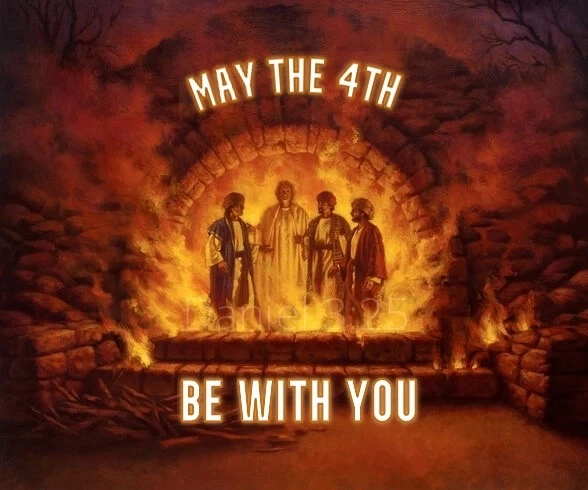I live in the English-speaking culture of the USA, and here, we have some fun calendar dates that play on some pretty neat visual and auditory culturalisms. For example, the abbreviation for March 10th forms a unique visual image related to the most famous plumber on earth; when you combine the letters MAR with the number 10, it looks like the name of Mario. So, it’s been unofficially dubbed “Mario Day” here. I presume these kinds of calendric novelties also occur in other areas of the world where English is not the native language. However, at least one of these calendar dates crosses our linguistic divides. I’m specifically thinking of March 14th; That day is known as Pi Day. No, I’m not talking about a day dedicated to tasty desserts; I’m talking about the unending number known as pi within the field of mathematics. It’s called Pi Day because March is the 3rd month of the year, and when you put a decimal point between 3 and 14, it becomes 3.14 – the first three digits in the number pi.
Well, today is another one of those days. Today is the 4th of May, or spoken another way, today is May the 4th. The latter way of saying this date is why it’s unofficially known as Star Wars Day. If you don’t watch movies or have never seen one of the Star Wars films, you might be asking “Why?” Well, there’s a popular phrase used in these movies as a way of saying farewell to someone; they say, “May the Force be with you.” In the Star Wars universe, the Force is kind of like an eternal essence that permeates the universe and can be wielded as a force for good or evil depending on the person interacting with it. That’s probably an oversimplification; I know there’s at least one Star Wars buff out there critiquing my explanation right now. So, if that’s you, lower your voice and control your breathing; you’re right, and I’m wrong. The point is that the phrase immediately gained popularity outside of the movie itself and made its way into the vocabulary of Star Wars fans everywhere. Nowadays, it’s often used as a way of saying goodbye to other Star Wars fans.
Hopefully, you’re starting to see the connection to today’s date. “May the Force” and “May the 4th” sound quite similar when you say them out loud. This similarity gave rise to the pun, “May the Fourth be with you.”1 Now, May 4th has become an unofficial movie holiday, and of course, the film franchise has been more than happy to lean into this free bit of advertising. They’ve marketed it in every way possible way and even trademarked both forms of the phrase itself (the word and the number).2 Needless to say, it’s become a cultural reference in my country and quite a popular one.
Similarly, you can find cultural references everywhere in the Bible. As you might expect, most of them are related to Israelite culture in some way. However, foreign cultural references were also used to evangelize those who hadn’t heard the Gospel. I’m specifically recalling what the Book of Acts records the Apostle Paul doing in Athens on Mars Hill.3 The Athenian people had multiple altars for worshiping their pantheon of gods; there was a temple for Zeus, a temple for Athena, a temple for Ares, and so on. While waiting for his friends to arrive in Athens, Paul took a tour of the city and found one of the altars was dedicated to an unknown god. He used this cultural reference to declare the Gospel to the Athenians. The inscription on the altar literally read “TO AN UNKNOWN GOD,” so Paul said to them, “This God, whom you worship without knowing, is the one I’m telling you about” (Acts 17:23, NLT).
Essentially, Paul used what was already in the zeitgeist of ancient Athenian culture to advance the message of the Gospel. You can see how he took an Athenian cultural reference (the altar to an unknown god) and connected it with a Christian cultural reference (the resurrection of Jesus). It’s an evangelization tactic called contextualizing the Gospel, and that’s exactly what we’ll be doing today with Star Wars. “May the Fourth be with you” lends itself well to the practice of contextualization. However, to understand the phrase’s Christian counterpart, I’ll need to tell another story.
There’s a fairly well-known Bible story from the Book of Daniel that takes place during the period of Israel’s exile in Babylon. It revolves around the saving faith of three Hebrew men named Shadrach, Meshach, and Abednego.4 I’ll give a quick summary of it for those who haven’t heard it before, but to connect it with our Star Wars phrase and the meme embedded within this article, I’ll need to quote a particular passage in the story; you’ll know when we get there.
The story starts with an idolatrous act by the king of Babylon, Nebuchadnezzar. He constructed a gold idol about 90 feet tall and 9 feet wide for everyone under his command to worship. If that’s not enough, he threatened to kill anyone who didn’t worship it by throwing them into a furnace of fire; all of this is just textbook bad-guy stuff, Biblically speaking. When the music played, the people were supposed to bow down and worship the idol. This order just didn’t fly with Shadrach, Meshach, and Abednego. When it comes to behavior God doesn’t allow, worshiping another God is quite literally rule number one. So, they didn’t worship the golden idol when the music played, and afterward, they got ratted out to the king by some Chaldean narks.
King Nebuchadnezzar then sent for Shadrach, Meshach, and Abednego to come to him. He told them what was said about them and gave them a final chance to save their skin; he would watch them bow down to the idol when the music played. Well, they told the king to get bent. As you might imagine, that wasn’t received well by him. So, the king ordered that the furnace fire be made hella hot and that those three be thrown into it. However, he wasn’t prepared for what happened next.
Daniel 3:23-27 records the event. It reads: “And these three men, Shadrach, Meshach, and Abed-Nego, fell down bound into the midst of the burning fiery furnace. Then King Nebuchadnezzar was astonished; and he rose in haste and spoke, saying to his counselors, “Did we not cast three men bound into the midst of the fire?” They answered and said to the king, “True, O king.” “Look!” he answered, “I see four men loose, walking in the midst of the fire; and they are not hurt, and the form of the fourth is like the Son of God.” Then Nebuchadnezzar went near the mouth of the burning fiery furnace and spoke, saying, “Shadrach, Meshach, and Abed-Nego, servants of the Most High God, come out, and come here.” Then Shadrach, Meshach, and Abed-Nego came from the midst of the fire. And the satraps, administrators, governors, and the king’s counselors gathered together, and they saw these men on whose bodies the fire had no power; the hair of their head was not singed nor were their garments affected, and the smell of fire was not on them” (Daniel 3:23-27, NKJV).
The story concludes with the king of Babylon praising God, promoting these Hebrew men, and decreeing that no one speaks against the God who saved them. For Nebuchadnezzar, the fourth person in the fire was representative of God. That person’s presence protected them from the deadly flames. Of course, it begs the question: who was this fourth person?
The fourth figure is a matter of interpretation. Some Christians believe this fourth figure was the pre-incarnate Jesus Himself, and there’s some compelling Biblical connections for this view.5 Other Christians see this fourth figure as an angelic being, and this is another tenable view. However, all Christians agree that the fourth figure is typological of what Christ does for those who believe in Him and trust Him for their salvation. The Son of God and the second Person of the Trinity, Jesus Christ, protects us from condemnation and delivers us from the fires of hell.
The tale about Shadrach, Meshach, and Abednego is a cultural reference point for Christians. Much like you probably wouldn’t know about Mario Day if you weren’t a video gamer or Star Wars Day if you weren’t a movie watcher, you probably wouldn’t know about the fiery furnace story if you weren’t a Christian or a Jew.6 However, much like Paul used the altar to an unknown God to talk about Jesus then, we can use the phrase “May the Fourth be with you” to do the same thing now.
So, if you’re a Christian, here’s how you can reply to that phrase today. When someone says, “May the Fourth be with you,” they’re expecting you to respond with something like, “May the Fourth be with you too.” Instead, hit them with an abrupt, “He is.” Then follow that up with “May He be with you too.” It’s sure to surprise them, but when they ask you about it, you’ll have an opportunity to tell them about God’s protection of Shadrach, Meshach, and Abednego from the fiery furnace. More importantly, you’ll have an opportunity to tell them about how God protects us from the fires of hell through Jesus Christ. It just might be exactly what they needed to hear today.
Everyone faces the fires of life, and often, fun phrases like “May the Fourth be with you” are welcome distractions from the flames. They provide us with a temporary escape from the burning, even if just for a moment. So, don’t underestimate the power of your response because it leads to telling them how to permanently escape.
So, wherever life takes you or whatever fires you might be experiencing, may the Fourth be with you. Until next time, may God bless you abundantly.
- To know more about how the phrase became popular, visit the official site of Star Wars.
- You can view the documentation and check the status of the word trademark and number trademark.
- This story can be found in Acts 17:16-34.
- This story can be found in Daniel 3.
- This interpretation is strengthened by Isaiah 43:2 where God Himself promises “I will be with you … when you walk through the fire you shall not be burned, and the flame shall not consume you” (Isaiah 43:2, ESV).
- This is an Old Testament story; therefore, Jews would be familiar with it also.

